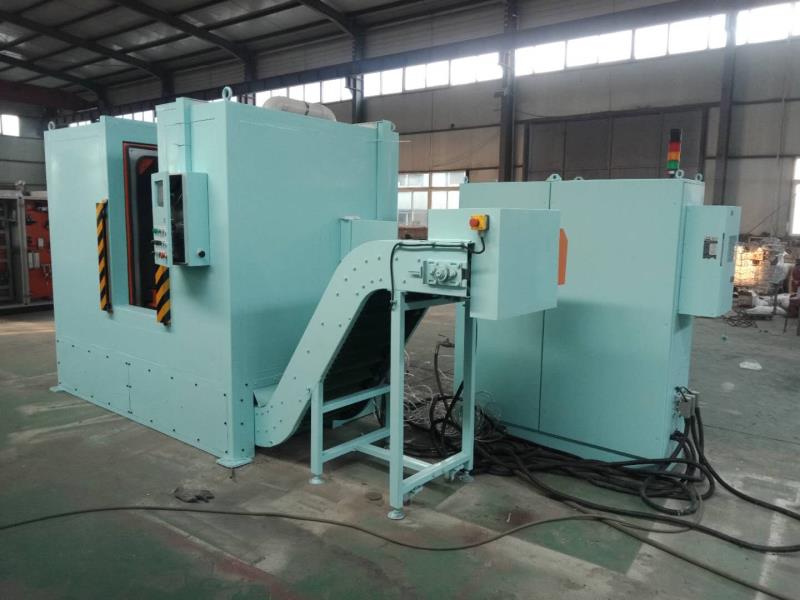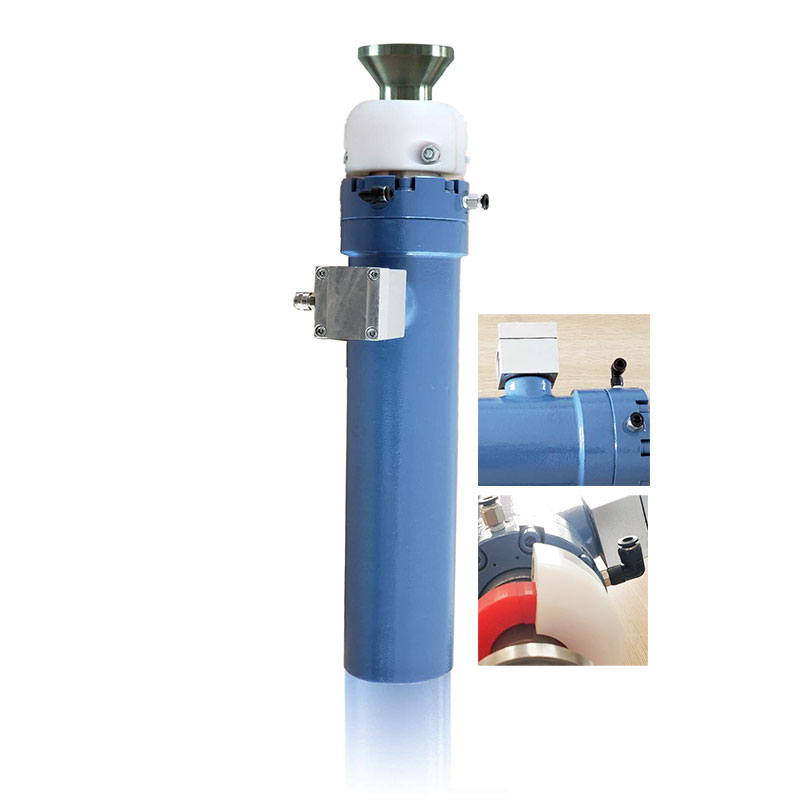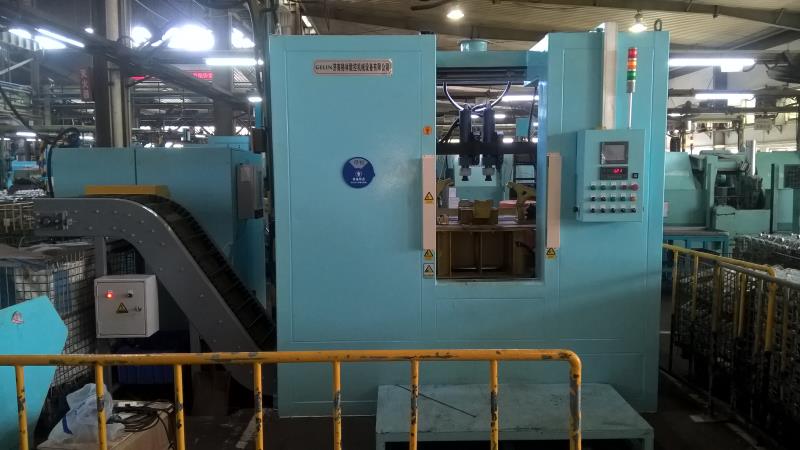Decoring machine workstation for sand cleaning of aluminum castings
Sand cores are broken by impact energy, thereby preparing them for subsequent vibratory decoring. Due to the high-frequency vertical vibration direction, the sand blocks are thrown towards the wall of the aluminum casting with high energy and thus effectively crushed. Jump over obstacles in the clear space with the set vibration direction. A sand-air mixture is formed that is sent from the aluminum casting using high-frequency vibrations.Read More: Casting Wikipedia
Features
For parts with large clearance and unfavorable opening position, the part can be turned to the required position by means of a rotary unit. Allow loose sand to flow out from castings.
The direction of vibration of a part changes with the angle through which the part is turned.
Application
- Crankcase
- cylinder head
- Chassis parts
- pump casing
- Oil pan etc.
Advantage
- Low investment and operating costs
- Reduced decoring waste
- Easy to operate
- Flexible Casting Fixtures
- Decreases decoring time by improving decoring performance
- Sturdy structure
- Integrated Sand Guide Technology
- Sand falls directly into the sand box, conveyor belt or vibrating conveyor trough
- De-coring hammer for breaking sand cores can be integrated
Decoring machine workstation–the later stage of the crankcase
It is precisely in aluminum casting processes using core sand inorganic binders that traces of residual sand in the casting are causing more and more problems. This residual sand adheres to the edges and corners of the pipe or comes from penetration (sand grains encased in the casting material). To maximize the removal of this residual sand, the aluminum castings are subjected to a special hammering process using individual decoring hammer heads.
The post-decoring machine workstation is responsible for removing the residual sand in the crankcase. For noise protection considerations, the decoring machine workstation is installed in a separate soundproof cabinet. The workstation is loaded by the robot through the L-shaped sliding door.
After placing the casting, the decoring hammer hammer unit is pneumatically swiveled from behind and above the crankcase. The decoring process then starts automatically. At the end of the process, the decoring hammer hammer unit is swiveled back and the robot can remove the crankcase from the workstation again.
More Detail: Decoring Machine, Guide to Decoring Systems of Castings
Decoring Machine
The casting Decoring Machine is an advanced structure, high-efficiency production of sand core removal equipment for non-ferrous metal castings. It is mainly used for cleaning sand cores of various aluminum alloy castings with complex cavities. Pump body, casing, and other castings.
Technical data
- Aluminum Casting Type: Crankcase (4 Cylinder)
- Vibration direction: vertical
- Frequency: 33Hz
- De-coring hammer hammer head positioning: rotatable
- Decoring Hammer Tip Quantity: 2 pcs
- Loading and unloading: robot
- Work clamping: not required
Technical parameter
- Casting type: crankcase, cylinder head, chassis parts, pump housing, etc.
- Vibration direction: alone
- Frequency: 24~33Hz
- Decoring Hammer head position: fixed, rotatable, movable
- Maximum casting size L/W/H: no fixed limit
- Maximum load (including clamps): no fixed limit
- Work clamping: not required
- Loading and unloading: manual or automatic (robot)
- Integration into other workstations: Yes
Decoring machine workstation–blank processing line
The 6-cylinder crankcase is fed into the decoring cell via the turntable. In a process step before starting the actual decoring process, the casting is de-gated with the aid of a stationary circular saw. The sand cores of the crankcases are then crushed at the stand-alone pre-decoring machine workstation. Here, all core sand is removed for it by vibratory decoring. The crankcase leaves the decoring cell by shuttle and is transported to the subsequent blank processing.
Technical data
- Pre-decoring machine station: Freestanding workstation with 1 casting fixture and 2 stationary decoring hammers
- Saw: 1 stationary circular saw for sprue removal
- Decored Casting Type: 6 Cylinder Crankcase
- Degree of automation: fully automated by robots
- Feeding: round table
- Cutting material: shuttle car
- Sand discharge: sand guide plate and vibrating conveyor trough

Decoring Machine
The casting Decoring Machine is an advanced structure, high-efficiency production of sand core removal equipment for non-ferrous metal castings. It is mainly used for cleaning sand cores of various aluminum alloy castings with complex cavities. Pump body, casing, and other castings.
More Detail: Decoring Machine, Guide to Decoring Systems of Castings
Manual Vibration Decoring Hammer Workstation
The manual decoring machine station with manual clamping device as a simple vibratory decoring together forms the basis of the decoring plant.
Based on this, castings of all types and sizes can be efficiently and time-savingly decored by means of manual clamping units. The sand can fall directly into the sand box located below it or the sand conveying equipment operating below it.
Technical data
- Casting type: crankcase, cylinder head, chassis parts, pump housing, etc.
- Vibration direction: vertical
- Amplitude: 12 mm max (+/- 6 mm amplitude)
- Frequency: 25Hz
- Acceleration: up to 15 g
- Maximum casting size L/W/H: 900 / 780 / 360 mm
- Maximum load capacity (including clamps): 80 kg
- Workpiece clamping: Rack clamping device
Decoring machine workstation–late stage
Decoring machine workstation – integrated on the extrusion station for the crankcase riser. There are two decoring hammer heads for the decoring process. The combined station is part of a fully automated blank processing system that includes a decoring machine station, several sawing stations, milling stations and a cleaning station.
Technical data
- Casting Type: Crankcase (6 Cylinder)
- Vibration direction: vertical
- Frequency: 24~33Hz
- Frequency transmitter dimensions: RS 2000 7.1, RS 2000 6.1, RS 2000 4.2
- De-coring hammer hammer head positioning: removable
- Work clamping: not required
- Integration into other decoring machine workstations: yes


